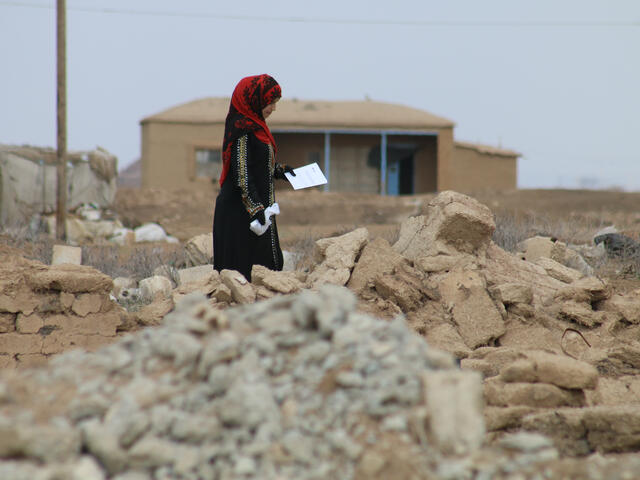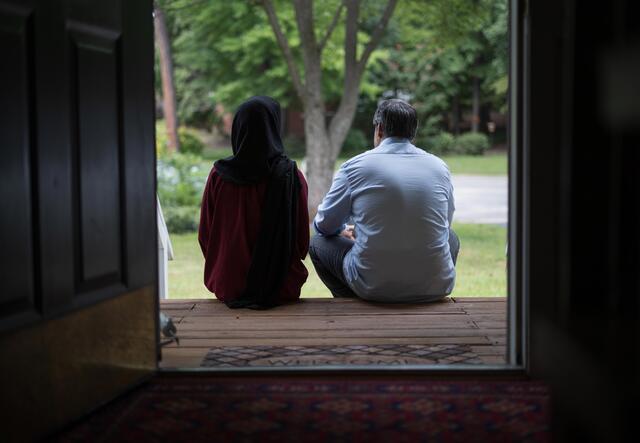
Temporary Protected Status (TPS) is a critical humanitarian tool that protects foreign nationals residing in the United States from deportation when conditions in their home countries make it unsafe to return.
TPS has been making headlines as the Trump administration has taken steps to end protections for people from Venezuela, Afghanistan, Cameroon, Nepal, Honduras, Nicaragua and Syria. These policy changes and the legal challenges that follow will affect hundreds of thousands of people who rely on TPS to remain safely and legally in the United States.
Get the facts on TPS and what it means for people who cannot return to their home countries due to safety concerns.
What is Temporary Protected Status (TPS)?
The U.S. Congress established TPS in 1990 as a protective immigration status for people from countries affected by ongoing armed conflict, an environmental disaster, an epidemic, or other extraordinary and temporary conditions that make a safe return to their home countries impossible. For more than 30 years, TPS has enjoyed bipartisan support, with Democrat and Republican presidents alike using the program to protect vulnerable populations.
As of March 2025, nearly 1.3 million people in the U.S. were protected by TPS. Like refugees, TPS holders contribute significantly to the American economy. They fill essential jobs, and in many small towns, economies are being revitalized by their presence. TPS holders are valued members of American communities, schools, and workplaces—and the remittances they send to their home countries help relieve the root causes of migration.
A recent study shows that reduction of lawful pathways, which include the US Refugee Admissions Program (USRAP) and Temporary Protected Status (TPS) would potentially cost the US economy almost $900 billion between 2025-2028.

To qualify for TPS, a person must already live in the U.S. Specifically, they must have been continuously physically present and residing in the U.S. before the date the status was designated by the Department of Homeland Security (DHS). This means that people who arrive in the U.S. after that date are not eligible. TPS can last between 6 to 18 months, and can be extended by DHS.
While TPS allows people to live and work legally in the U.S. throughout the duration of their status, it does not offer a pathway to permanent residency or citizenship.
How is TPS extended?
All TPS designations have an expiration date. DHS must review the conditions in countries with TPS designations and decide whether to extend or terminate these designations 60 days before the status expires. When TPS is extended, holders of the status must reapply for protection.
DHS can also decide to redesignate the status, allowing individuals who arrived in the U.S. after the prior designation date—but were already living in the U.S. before the redesignation—to apply for protection.
How have TPS protections changed under the Trump administration?
Between January and September 2025, the Trump administration has taken steps to end TPS protections for Venezuela, Afghanistan, Cameroon, Nepal, Honduras, Nicaragua and Syria. These rollbacks have triggered a series of legal challenges, where multiple federal judges have ruled that premature TPS terminations are likely unlawful and highlighted the valuable contributions of TPS holders.
The administration has also reduced protection periods, such as cutting Haiti's extension from 18 to 12 months, canceling Biden-era extensions. While some terminations have been temporarily blocked by federal courts, the Supreme Court has generally allowed terminations to proceed during appeals. These rapid changes have created significant uncertainty, with protective status for hundreds of thousands hanging on ongoing litigation, marking a sharp reversal from previous policies that recognized ongoing humanitarian crises in these countries. The only exception has been South Sudan, which received an automatic six-month extension due to the administration missing the statutory deadline for making a determination.
How is TPS different from refugee resettlement?
TPS is a program for people already living in the United States. It is also temporary, meaning holders are not given a pathway to permanent status or citizenship.

Refugee resettlement helps those outside the U.S. who had to flee their countries due to persecution by allowing them to rebuild their lives in the U.S., with a pathway to lawful permanent resident status and eventually citizenship. Yet, fewer than one percent of refugees across the globe have a chance to resettle.
The Biden administration had taken steps to rebuild the refugee resettlement program after its decimation during the first Trump administration, including by setting an ambitious admissions goal of 125,000 for fiscal year 2025; however, the second Trump administration indefinitely paused all new refugee admissions on his first day in office.
Learn more about refugee resettlement.
How is TPS different from asylum?
TPS is applicable to people already in the U.S. before their country of origin received the TPS designation. In contrast, asylum seekers are individuals who flee their country and apply for asylum after arriving in the U.S. They must prove they cannot return due to persecution based on race, religion, nationality, social group membership or political opinion. Asylum seekers present their case to an asylum officer or in immigration court, and legal representation can significantly impact the outcome.
Once granted asylum, they become asylees, gain legal permanent protection from deportation, and can apply for permanent residency and citizenship. Asylees are also eligible to work, travel abroad, and bring their spouse or children under 21 to the U.S.
One of the key differences is that TPS only offers temporary protection for those needing safety. TPS holders who also qualify for asylum may still apply for asylum to secure permanent status.
Which countries have TPS designations?
As of October 15, 2025, ten countries currently have TPS designations: Myanmar (Burma), El Salvador, Ethiopia, Lebanon, Somalia, South Sudan, Sudan, Ukraine,Yemen and Haiti (protected through February 3, 2026 due to a court order.)

For example, El Salvador received TPS following two devastating earthquakes in 2001, with subsequent developments leading to its extension and re-designation for over 20 years. Haitians have been eligible for TPS since the catastrophic 2010 earthquake, and ongoing conditions have prompted continued extensions although there are currently multiple lawsuits challenging the reversal of the redesignation.

How does the IRC help?
The International Rescue Committee (IRC) offers high-quality, low-cost immigration legal services and citizenship assistance in 24 cities across the United States. As part of our immigration programs, the IRC helps eligible individuals apply for and renew their TPS status, identifies whether TPS holders are eligible for other forms of humanitarian protection or immigration status, and assists with legal services where applicable.
The IRC also responds to the world’s most urgent humanitarian crises including in countries with TPS designations like Sudan and Ukraine. Founded at the call of Albert Einstein over 90 years ago, the IRC remains dedicated to helping people affected by crises to survive, recover and rebuild their lives.
We consistently earn top marks by charity watchdog groups for our efficient use of donor contributions and the effectiveness of our work.
Support our mission—help crisis-affected people survive, recover and rebuild their lives.
How you can help
People with TPS are contributing members of American communities, schools and workplaces. Ending TPS would harm mixed status families, communities and businesses while putting people who have TPS in legal limbo and danger. The IRC needs your support to continue to deliver our critical programs for people with TPS status and other at-risk groups in the U.S.
Learn more about how you can help the IRC continue our mission.
Get connected: Follow our Instagram, LinkedIn, Facebook, Bluesky and X accounts.




